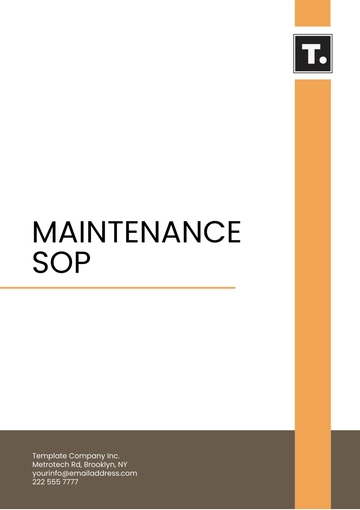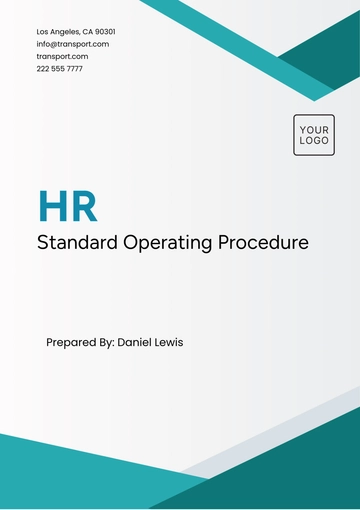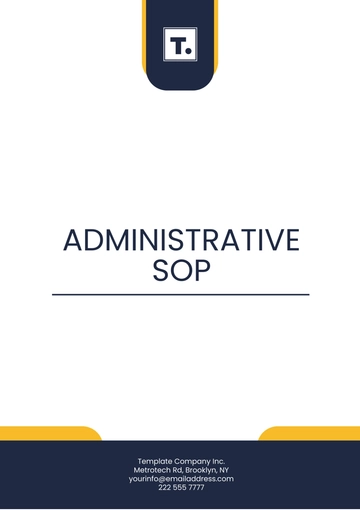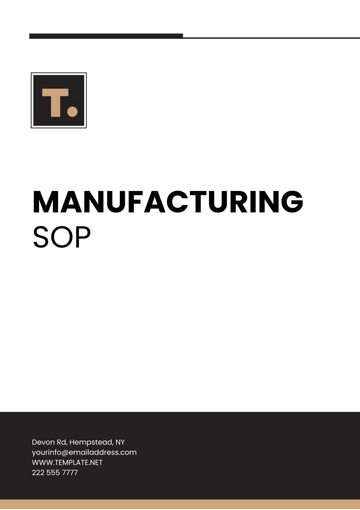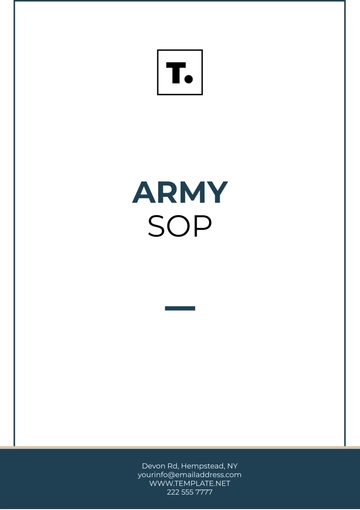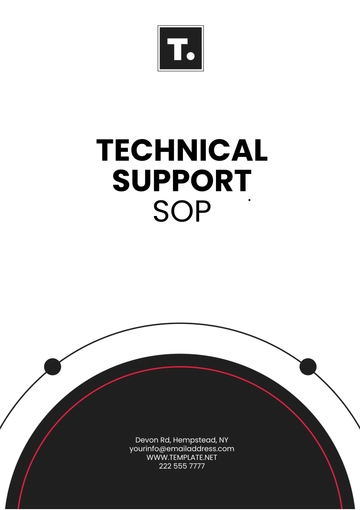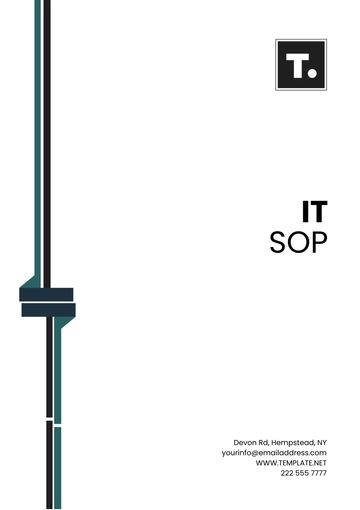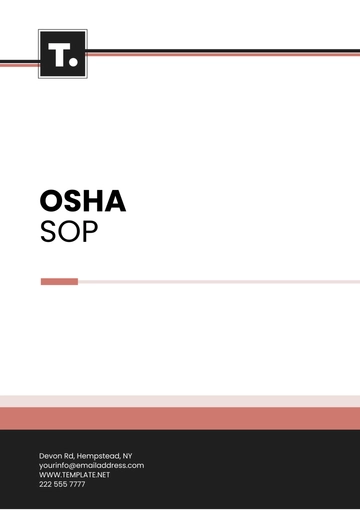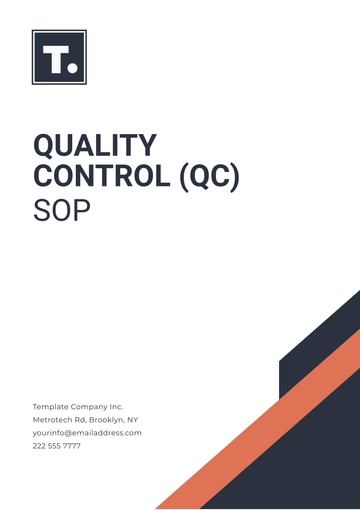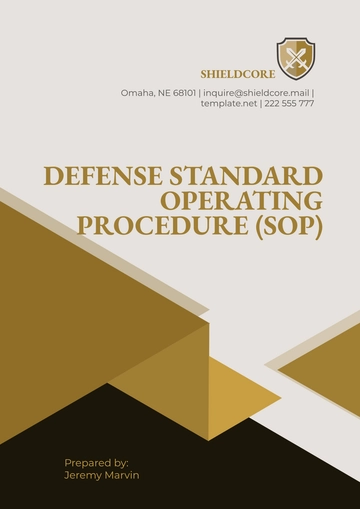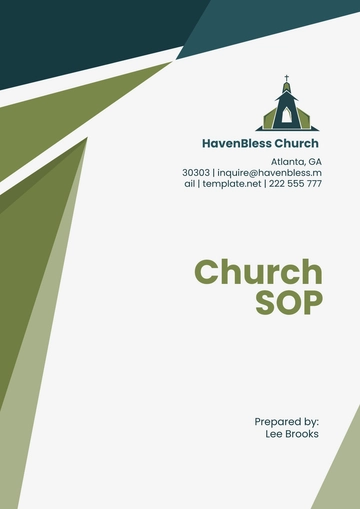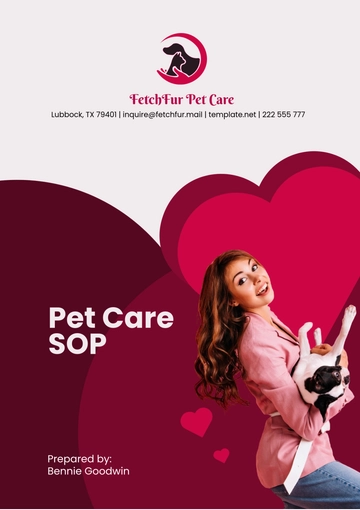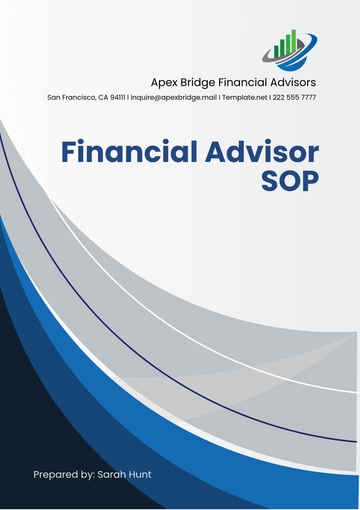Free Pet Care SOP
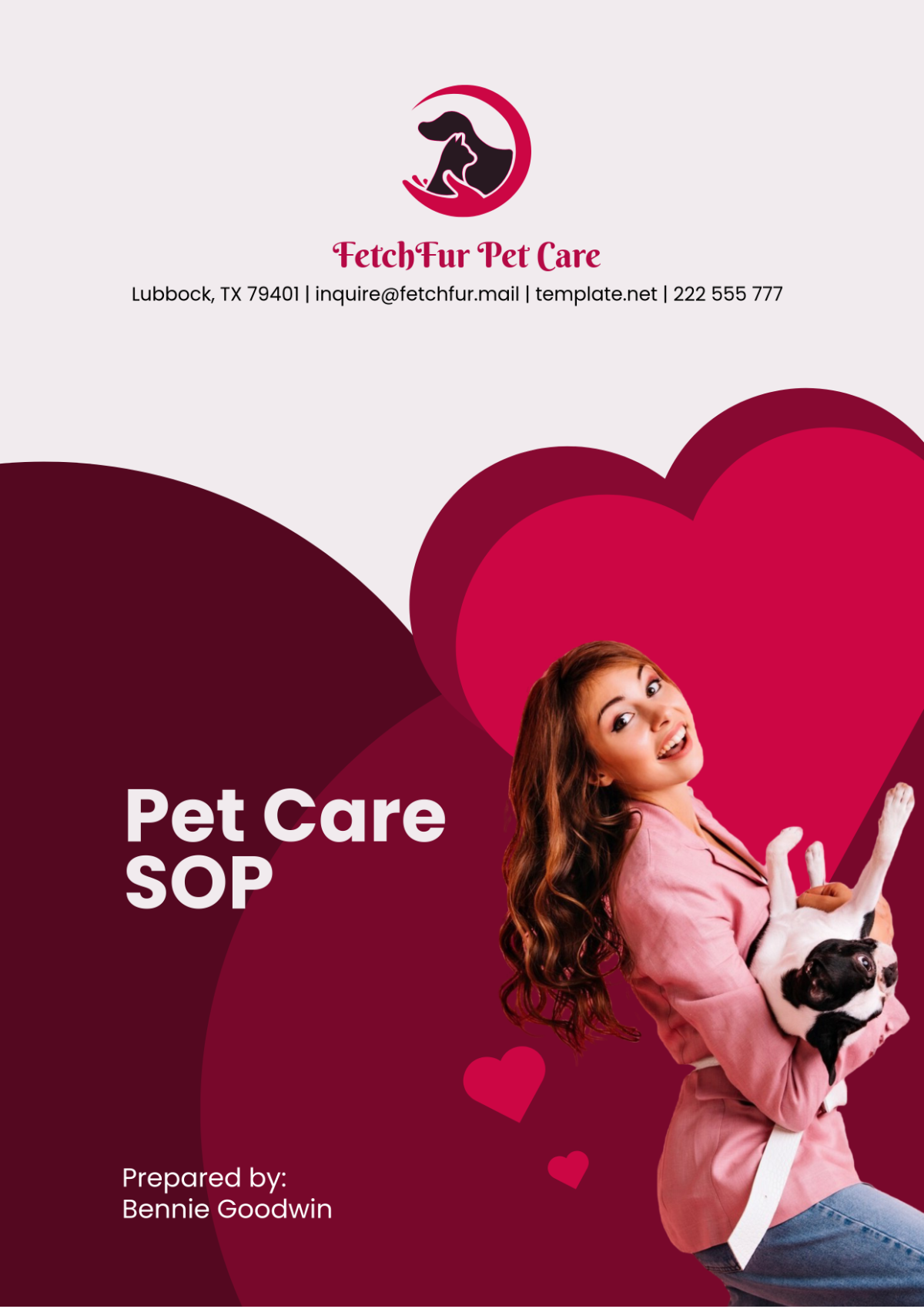
1. Purpose
1.1 Objective
The purpose of this Standard Operating Procedure (SOP) is to provide a clear and standardized approach to pet care at [Your Company Name], ensuring that all animals in our care receive the highest quality of attention and treatment. This document serves as a guide for all pet care activities, from feeding and grooming to health monitoring and emergency response, in order to create a safe, nurturing, and efficient environment for both pets and staff.
1.2 Mission Statement
At [Your Company Name], our mission is to provide pets with a safe, comfortable, and healthy living environment, ensuring they receive the appropriate care and treatment they need to thrive. By implementing this SOP, we aim to minimize the risk of illness, stress, and injury while maximizing the well-being of the pets entrusted to our care.
2. Scope
2.1 Coverage
This SOP applies to all pet care operations within the facilities of [Your Company Name], including pet boarding, grooming, training, and health management. It is intended for use by all employees directly involved in pet care, such as caretakers, veterinarians, groomers, trainers, and supervisors.
2.2 Areas of Focus
The SOP covers a wide range of areas related to the care of pets, including but not limited to:
Feeding: Ensuring that all pets receive proper nutrition and hydration according to their specific needs.
Exercise: Facilitating regular physical activity to maintain a pet’s physical health and mental well-being.
Grooming: Performing essential grooming tasks to maintain the hygiene and comfort of pets.
Health Monitoring: Conducting regular checks for signs of illness or discomfort and responding promptly.
Training and Behavior: Encouraging positive behavior and addressing any behavioral issues through appropriate techniques.
Safety: Implementing safety protocols to protect both pets and staff from accidents or injuries.
3. Definitions
3.1 Pet Care Staff
Pet care staff refers to any employee responsible for directly interacting with, feeding, grooming, exercising, or otherwise caring for pets in the company’s facilities. This includes all staff from caretakers and groomers to trainers and veterinarians.
3.2 Emergency Procedures
Emergency procedures are the steps to be followed when a pet’s health or safety is compromised. These procedures can include medical emergencies, natural disasters, or accidents, and are designed to ensure prompt and effective action in times of crisis.
3.3 Health and Wellness
Health and wellness encompass the overall physical and mental condition of a pet. It includes all aspects of a pet’s life, from nutrition and exercise to mental stimulation and preventive care. Regular health assessments, vaccination, and treatments are part of this domain.
3.4 Pet Safety Protocol
Pet safety protocols are guidelines and procedures put in place to ensure that pets remain safe at all times. These include guidelines for the secure handling, restraint, and transport of pets, as well as strategies to minimize risks from environmental hazards.
4. Responsibilities
4.1 Pet Care Staff Responsibilities
Each member of the pet care team is responsible for ensuring that the pet's needs are met on a daily basis. Staff members are expected to adhere to all procedures outlined in this SOP, including:
Feeding pets according to their specific diet and portion requirements.
Providing adequate exercise to maintain physical health and alleviate stress.
Conducting regular health checks, observing for any signs of discomfort or illness.
Documenting all activities, including feeding, grooming, health observations, and any other notable events in the pet's care log.
4.2 Supervisor Responsibilities
Supervisors are tasked with overseeing the day-to-day operations within the pet care department. Their responsibilities include:
Monitoring the quality of care provided to pets, ensuring that all staff members are adhering to the established SOP.
Offering training and support to staff to help them improve their care practices.
Coordinating with veterinary professionals to ensure that pets receive necessary medical attention when required.
Reviewing pet care logs and other records to ensure accuracy and completeness.
Managing emergency situations effectively, guiding staff on how to handle crises appropriately.
5. Procedure for Daily Pet Care
5.1 Feeding
5.1.1 Importance of Proper Nutrition
Feeding is one of the most crucial aspects of pet care, directly affecting the health, energy levels, and overall well-being of the pets. Pets must be fed a balanced diet tailored to their specific age, breed, and health condition. Proper nutrition helps maintain optimal body weight, boosts immunity, and supports growth and development, particularly in younger animals.
5.1.2 Recommended Feeding Schedule
Pets should be fed on a regular schedule, with food and water provided at consistent times each day. Staff should always ensure that food is fresh and clean, and that pets have access to fresh water at all times.
For example, dogs may be fed two times per day, while cats typically require smaller portions more frequently, though some may eat just once a day. Rabbits, in contrast, require a continuous supply of hay, with fresh vegetables and limited pellets provided on a daily basis.
5.1.3 Adjustments for Special Needs
Pets with specific dietary requirements, such as food allergies or medical conditions, must be fed according to a veterinarian’s recommendations. If a pet requires a specialized diet, this should be documented clearly in their care profile to ensure all staff are aware of the dietary restrictions.
5.2 Exercise
5.2.1 Physical and Mental Health Benefits
Exercise is not only important for maintaining a pet’s physical health, but it is also essential for their mental well-being. Regular activity helps reduce stress, alleviate boredom, and prevent the development of behavioral problems, such as excessive barking in dogs or destructive scratching in cats.
5.2.2 Recommended Exercise Routine
Exercise routines should vary based on the type and age of the pet. For example, active dog breeds may need longer walks or more intensive play sessions, while older or less active pets may require shorter, gentler activities. Cats can benefit from interactive play with toys that simulate hunting, while rabbits and birds should have opportunities for free movement in a safe, enclosed space.
5.2.3 Monitoring and Adjusting Exercise Plans
Exercise intensity and duration should be monitored regularly to avoid overexertion. Pets that show signs of fatigue or discomfort should have their exercise routines adjusted accordingly. For pets with medical conditions or disabilities, individualized exercise plans should be created in consultation with a veterinarian.
5.3 Grooming
5.3.1 The Role of Grooming in Pet Health
Grooming is an essential part of pet care that helps maintain hygiene, prevent infections, and monitor for signs of health problems such as skin irritations or parasites. It is also important for maintaining a pet's comfort, especially in breeds with long coats that can mat or cause discomfort if not properly cared for.
5.3.2 Grooming Techniques
Different pets require different grooming techniques. For example, dogs with thick, long coats should be brushed regularly to prevent tangles and matting. Cats also require regular brushing to reduce shedding and hairballs. Birds and rabbits may need occasional nail trimming, while birds might need their feathers preened to prevent discomfort.
5.3.3 Special Grooming Considerations
Special grooming practices may be required for pets with sensitive skin, allergies, or medical conditions such as arthritis or vision impairments. In such cases, staff should use hypoallergenic products and softer grooming tools.
5.4 Health Monitoring
5.4.1 Regular Check-Ups
Pet care staff should conduct regular health checks to observe signs of illness or injury. Key things to look for include changes in eating habits, abnormal behaviors, weight loss or gain, and signs of discomfort such as limping, coughing, or excessive scratching.
5.4.2 Reporting Health Concerns
Any health issues, whether minor or severe, should be immediately reported to a supervisor or veterinarian. An incident report should be completed, detailing the pet's symptoms, actions taken, and any follow-up required. This ensures that all health concerns are addressed in a timely and accurate manner.
6. Emergency Procedures
6.1 Pet Injury or Illness
6.1.1 Assessment of Severity
When a pet is injured or falls ill, the first step is to assess the situation. Staff should check for signs of bleeding, broken bones, difficulty breathing, or changes in consciousness. Based on the severity, immediate action should be taken, either through basic first aid or by seeking professional medical help.
6.1.2 Veterinary Assistance
If the injury or illness requires medical attention beyond basic first aid, the attending veterinarian must be contacted immediately. In some cases, emergency transport to a nearby animal hospital may be required. All actions taken should be documented thoroughly in the pet's health record.
6.2 Natural Disaster Protocol
6.2.1 Safety Measures
During natural disasters such as storms, earthquakes, or floods, it is crucial to ensure the safety of both pets and staff. All pets should be secured in safe, enclosed areas, and steps should be taken to minimize their exposure to harmful elements, such as debris or severe weather.
6.2.2 Emergency Supplies
An emergency pet care kit should be kept on-site, stocked with essential supplies such as food, water, medications, leashes, and first aid items. Staff should be familiar with evacuation procedures in case of extreme emergencies, ensuring the safe transport of pets to alternate facilities if needed.
7. Health and Wellness Protocol
7.1 Preventive Care
7.1.1 Importance of Preventive Care
Preventive care is critical for maintaining the health and well-being of pets. This includes routine veterinary exams, parasite prevention, and ensuring that pets are kept in a clean and healthy environment.
7.1.2 Preventive Measures
Preventive measures should include regular grooming to reduce the risk of infections, proper nutrition to support immune function, and regular deworming or flea treatments based on veterinary recommendations. Staff should monitor pets for signs of illness and take immediate action if necessary.
7.2 Vaccination
7.2.1 Importance of Vaccination
Vaccination is an essential component of pet care that helps prevent the spread of infectious diseases, many of which can be life-threatening. Pets should be kept up to date with the recommended vaccination schedules provided by their veterinarian.
7.2.2 Vaccination Schedule
Vaccination schedules will vary by species, breed, and age. For example, puppies and kittens may require a series of vaccinations in their early months, while adult pets may only need annual boosters. Vaccinations for preventable diseases such as rabies, distemper, and parvovirus should be prioritized.
7.2.3 Record-Keeping
All vaccinations must be documented in the pet's profile, including the date of the vaccine, the type of vaccine administered, and the next due date for boosters. This ensures pets remain protected and up-to-date on their immunizations.
8. Pet Safety Protocol
8.1 Handling and Restraint
8.1.1 Proper Handling Techniques
Proper handling and restraint are essential to ensure both the safety of the pet and the staff. Pets should always be approached calmly and confidently. Gentle, non-threatening methods should be used when handling pets to avoid stress or fear. Pets that are fearful, anxious, or aggressive may require additional training or special techniques to ensure their safety during handling.
For example, dogs that are nervous or reactive should be approached slowly, allowing them to sniff or acclimate to the handler before touching them. Cats may require a more cautious approach, with the handler allowing the cat to initiate contact. Staff should also be trained in the use of equipment such as leashes, harnesses, and carriers to safely restrain pets when needed.
8.1.2 Safety During Medical Procedures
When performing medical procedures such as injections, examinations, or administering medications, extra care must be taken to safely restrain the pet to prevent injury to the pet or the staff member. In these cases, staff should be trained in restraint techniques that limit the pet’s movement without causing undue stress or harm. For example, for dogs, a helper may be needed to gently hold the pet, while for smaller pets like cats or rabbits, a towel or specialized restraint device may be used.
8.2 Safe Environment Setup
8.2.1 Creating a Secure Environment
The environment in which pets are housed and cared for must be secure, clean, and conducive to their safety and comfort. All pet enclosures, crates, or cages must be securely locked to prevent pets from escaping. The area should be free from hazardous objects such as sharp items, choking hazards, or toxic substances. For example, small pets such as rabbits or guinea pigs should be provided with appropriate enclosures that allow them to move freely but also protect them from outside dangers such as predators or other aggressive animals.
8.2.2 Environmental Temperature and Lighting
The environment's temperature and lighting should be maintained at optimal levels for the comfort and well-being of the pets. Extreme temperatures can cause distress or health problems, such as heatstroke or hypothermia. Ideal indoor temperatures should range from [68°F to 72°F] ([20°C to 22°C]) for most pets. Additionally, sufficient lighting should be provided to simulate a natural day-night cycle, ensuring that pets receive the necessary exposure to light for a healthy circadian rhythm.
8.2.3 Regular Safety Inspections
Routine inspections of pet care facilities should be conducted to ensure that all safety measures are in place. This includes checking enclosures for any damages, ensuring that safety equipment (e.g., fire extinguishers, first aid kits) is accessible, and inspecting outdoor areas for potential hazards like unstable fences, debris, or poisonous plants. Staff should immediately report any safety concerns to the management for corrective actions.
9. Training and Behavioral Guidance
9.1 Training Techniques
9.1.1 Positive Reinforcement
Positive reinforcement is one of the most effective training methods for pets, promoting desired behaviors without the use of punishment. This technique involves rewarding pets with treats, praise, or toys when they exhibit the desired behavior. For example, when a dog sits on command, they should immediately receive praise or a treat to reinforce the behavior. This encourages the pet to repeat the action in the future.
9.1.2 Consistency in Training
Consistency is key to effective training. All pet care staff should use the same commands, tone of voice, and methods to avoid confusion. Additionally, training sessions should be kept short but frequent to maintain the pet's focus and prevent frustration. For example, training should occur multiple times throughout the day, but each session should last no longer than 10–15 minutes to maintain the pet's attention.
9.1.3 Gradual Socialization
For pets, especially dogs and cats, gradual socialization with people, other pets, and environments is an important aspect of behavioral training. Staff should introduce pets to new experiences slowly, ensuring that each exposure is positive and not overwhelming. Socialization should occur in controlled environments, with staff observing the pet's body language to avoid stress or fear.
9.2 Behavior Monitoring
9.2.1 Behavioral Observations
It is essential to monitor pets for any signs of behavioral changes, as these can be indicators of stress, illness, or discomfort. Staff should regularly observe pet behavior and document any notable changes in their behavior. This includes changes in eating, drinking, activity levels, or social interactions.
For example, a dog that was previously friendly may become withdrawn or show signs of aggression. These changes should be promptly reported to supervisors or veterinarians, and additional assessments should be made to determine the cause.
9.2.2 Addressing Behavioral Issues
Behavioral issues, such as excessive barking, biting, or litter box problems, should be addressed as soon as they are noticed. These issues can often be resolved with proper training, enrichment, and environmental changes. For instance, a dog that barks excessively may benefit from additional physical and mental stimulation, while a cat that refuses to use the litter box may need a more suitable box or cleaner.
For more severe behavioral problems, professional behaviorists or trainers may need to be brought in to assess and implement a structured plan for addressing the issues.
9.3 Addressing Behavioral Issues
9.3.1 Specialized Behavior Plans
For pets displaying more complex or persistent behavioral issues, individualized behavior plans should be created. These plans may include gradual desensitization, counter-conditioning, or structured training methods aimed at reducing undesirable behaviors and reinforcing positive ones. Behavioral issues should be viewed in the context of the pet’s environment, socialization, and prior experiences.
9.3.2 Collaboration with Professionals
For certain behavioral concerns, collaboration with external professionals, such as veterinary behaviorists or certified trainers, may be necessary. These professionals can conduct more thorough evaluations and provide specialized techniques for behavior modification. Staff members should follow the expert guidance provided to ensure that behavioral issues are addressed in the most effective and humane way possible.
10. Record Keeping and Documentation
10.1 Pet Profiles
10.1.1 Importance of Accurate Record Keeping
Accurate and up-to-date records are essential for ensuring that each pet receives the proper care and attention. Pet profiles should include detailed information about the pet’s diet, exercise routines, health history, vaccination status, and behavioral observations. These profiles serve as a reference for all staff members to ensure continuity and consistency in care.
10.1.2 Required Information in Pet Profiles
A complete pet profile should contain the following details:
Pet's full name, species, breed, and age
Emergency contact information for the pet's owner
Dietary preferences, restrictions, and allergies
Health history, including previous illnesses or surgeries
Behavior history, including any noted concerns or training needs
Vaccination history, including the date of the last vaccinations and upcoming booster dates
Pet profiles should be updated regularly to reflect any changes in the pet’s health, behavior, or preferences.
10.2 Care Logs
10.2.1 Documentation of Daily Care Activities
Care logs serve as a daily record of all actions taken to care for a pet. These logs should include details of each pet's feeding times, exercise sessions, grooming activities, health observations, and any other relevant incidents. For example, if a pet exhibits signs of discomfort, such as limping, this should be recorded along with any actions taken, such as administering pain relief or contacting a veterinarian.
10.2.2 Review of Logs by Supervisors
Supervisors should review care logs regularly to ensure that all staff members are following the SOP and providing the required care. Logs should also be checked for accuracy and completeness, with any discrepancies addressed immediately. This ensures that no important detail about the pet's care is overlooked.
11. Performance Metrics
11.1 Monitoring and Evaluation
11.1.1 Tracking Key Metrics
To assess the effectiveness of the pet care program, key performance metrics should be tracked regularly. These metrics may include pet health indicators (such as weight, activity level, and overall appearance), staff adherence to SOPs, and the overall satisfaction of pet owners. For example, a dog’s weight should be monitored to ensure it is within a healthy range, and any significant changes should trigger a review of the dog’s diet and exercise routines.
11.1.2 Quarterly Performance Reviews
Performance data should be collected quarterly, allowing management to assess trends and identify areas for improvement. Supervisors should conduct regular performance reviews with staff, where these metrics are discussed in detail. Any gaps in care or training should be addressed during these reviews to ensure continuous improvement.
11.2 Data Analysis
11.2.1 Evaluating Effectiveness
Data analysis will help identify patterns, such as recurring health issues, common behavioral problems, or inefficiencies in pet care processes. Based on the analysis, corrective actions or improvements to the SOP may be made. For example, if multiple pets are experiencing similar health issues, such as digestive problems, this could indicate a problem with feeding practices or the food supply.
11.2.2 Continuous Improvement
The data collected through performance metrics should be used as part of a continuous improvement process. Adjustments to procedures, training, and care plans should be made as necessary to improve the quality of care and ensure that all pets receive the best possible treatment.
12. Review and Revisions
12.1 Annual Review
12.1.1 SOP Review Process
This SOP will be reviewed on an annual basis to ensure that it remains relevant, accurate, and aligned with industry best practices. The review process will involve key stakeholders, including veterinarians, senior management, and experienced staff members.
12.1.2 Incorporating Feedback
Feedback from staff members and pet owners will also be solicited during the annual review to identify areas for improvement. Any suggestions for enhancing the care process, safety protocols, or training procedures will be considered and implemented when appropriate.
12.2 Updating the SOP
12.2.1 Revision Process
If changes are needed to improve pet care or update safety measures, revisions will be made to the SOP. These updates may involve expanding certain sections, adding new protocols, or revising outdated procedures. All revisions will be documented and communicated to all staff to ensure proper implementation.
12.2.2 Communication of Updates
When the SOP is updated, staff will be informed through training sessions, email notifications, or meetings. Staff members will be required to review and acknowledge the changes to ensure that everyone is informed and properly trained on the latest procedures.
- 100% Customizable, free editor
- Access 1 Million+ Templates, photo’s & graphics
- Download or share as a template
- Click and replace photos, graphics, text, backgrounds
- Resize, crop, AI write & more
- Access advanced editor
Streamline operations with the Pet Care SOP Template from Template.net. This editable and customizable template outlines standard operating procedures for consistent and high-quality pet care. Modify it using our Ai Editor Tool for your business's unique requirements.




